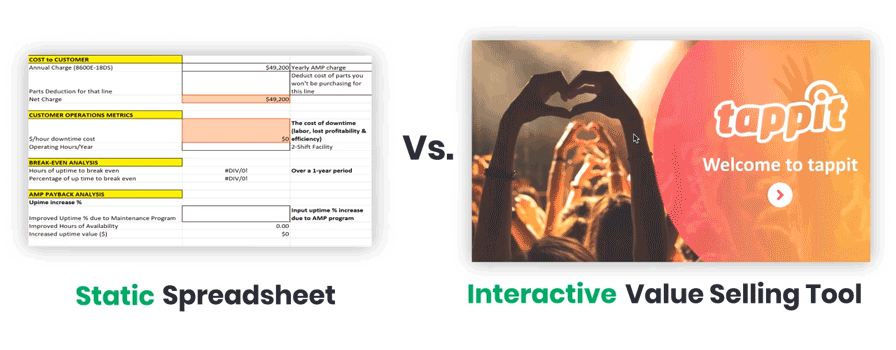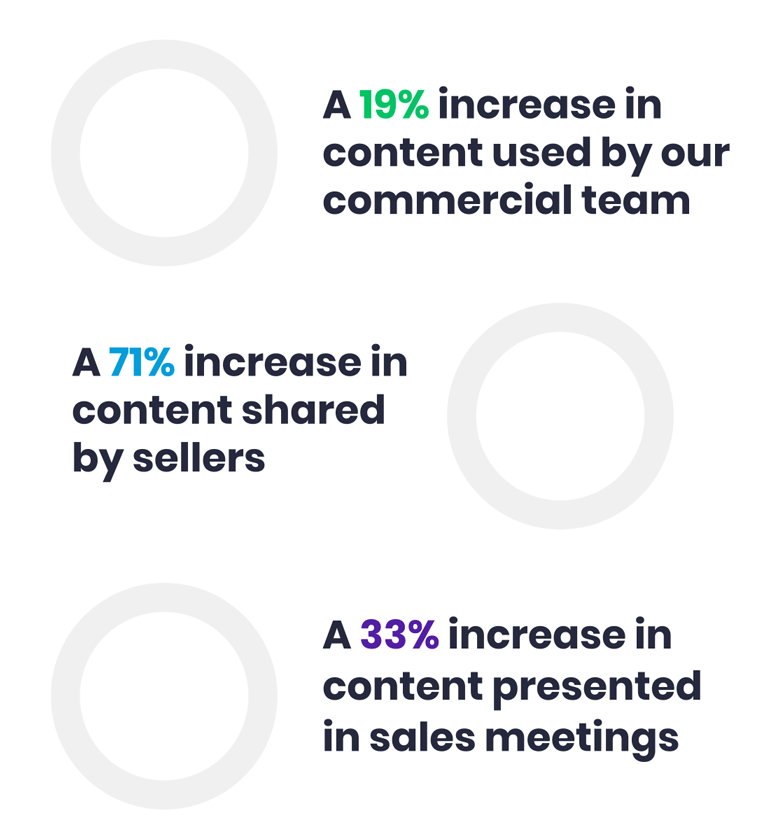The coronavirus pandemic may have plunged us into a recession that lasted only two months, but it has forever changed the way we do business. As buyers have become increasingly digital, their expectations of sellers have evolved. If you want to win their business moving forward, your sellers have to evolve along with them. That includes having an interactive content strategy. Here’s why.
Digital Buyers Require An Interactive Content Strategy
I have five and a half hours of Zoom calls baked into my workday tomorrow. Most days, I am tired of staring at a screen by 11am. But not so tired that I am willing to resume my 3-hour round-trip commute to the city.
That is the reality for 54% of global workers who wish to continue working from home even after the pandemic has ended.

With B2B buyers growing increasingly tired of screens and 80% of sales interactions occurring digitally and remotely by 2025, how do sellers expect to capture buyers’ attention and keep it long enough to close a deal?
Content is critical – but not just any content. Today’s buyers require engaging, animated, and interactive content that successfully communicates the value your product or solution delivers.
In this article, I’ll outline the three critical components of a winning interactive content strategy. I’ll also share how our team approaches them to create a superior content engagement experience.
3 Critical Components Of A Winning Interactive Content Strategy
-
Copy
As you begin your quest to transition from static to interactive content, the first thing you’ll want to evaluate is your copy. No, updating your copy won’t take you from static to interactive on its own, but it will help set you up for success.
Take our story, for example. At Mediafly, we use our own sales enablement platform to manage, share, and present content. Our Insights dashboard offers us advanced analytics into how our content is performing (e.g. how long a specific asset or page in an asset has been viewed, how many times it is shared and by who, and if it contributes to revenue).
In the early months of the pandemic, we saw a sharp decline in the amount of time our buyers spent reading our content. We knew they were still finding the content relevant because they were hitting every page of a guide or ebook, but the analytics clearly showed us they were skimming.
Which made sense. A lot of parents lost childcare and were having to work nights and weekends to get their work done, mass layoffs put additional work on the plates of workers who stayed employed, and everyone was generally trying to do more with less. That left a lot less time for content consumption.
Once we had this understanding, we knew distilling our copy down to the most important or insightful ideas and details would help us keep our busy readers engaged in the time they did have to dedicate to content consumption.
We also took care to ensure every piece of content followed a challenge-based narrative – focusing less on Mediafly and our products and more on our customers’ business challenges and how our solutions help solve them. Doing so allowed us to add more value for our buyers.
According to research findings released by ValueSelling Associates earlier this year, 87% of high-growth companies take this value-based approach to sales compared to 45% of negative growth companies.

(You can check out our recent blog on Value Enablement here to help you adopt a value selling approach.)
Before adding interactivity to increase content engagement, we first reshaped our copy into stories conducive to getting our ideas across to busy, distracted, and budget-conscious buyers.
Key Takeaways:
- Use insights gathered from content analytics to inform your interactive content strategy
- Focus on your customers’ challenges to grab their attention and help them justify a purchase decision
- Things change rapidly, regularly optimize your copy to meet your buyers where they are
-
Design
Once you’re confident you have compelling and relevant content to share from a copy perspective, it’s time to decide what format it should take.
Remember that digital buyers need digital content. But let’s agree on one thing – a PDF on a screen is not digital content. It’s a static PDF…on a screen.
Here’s an example:

The left side is little dull, right? True digital content is animated and interactive, as shown on the right.
To transform this piece of content, we leveraged the Presentify services we acquired for our customers to transform their content from static, linear PowerPoint presentations and pdf one-pagers to interactive, animated content experiences.
Doing so helped us create a concept of no loose ends where our buyers flow seamlessly through a piece of content and related assets, digging deeper into areas they find most compelling or relevant to their specific needs.
Although we now draft shorter, more succinct copy, we create more meaningful navigation within our content. We include buttons on the page to entice people to click and self-discover more about a topic, challenge, or solution if desired and at their own pace.
We now think of content formats as tools to help us better tell our stories, reimagining manuals and brochures as digital flipbooks and embedding video testimonials within our case studies.
By approaching each piece of content as its own little app, we create immersive experiences with more digestible stories that draw buyers in and bring our brand to life.
Key Takeaways:
- Throw out the belief that static PDFs are digital content – they’re not
- Create meaningful navigation within your content to help buyers self-discover more about a topic, challenge, or solution
- Employ animation and interactivity to help you create more compelling, immersive, and digestible content experiences
-
Delivery
Once you’ve reimagined your content, it is time to test it out with real-life buyers and see if it works. The best way to do this is to deliver your content via a sales enablement application that allows you to closely track success metrics and optimize accordingly.
(Note: When I say “success metrics”, I’m not talking about vanity metrics like shares or views. How much time are buyers spending viewing your content? How many times are they re-visiting a specific piece of content? Is it helping drive deals forward to close? Those are the metrics that matter.)
I mentioned earlier in this article that our content is managed and shared via our Mediafly sales application. Because of this, we are able to reconcile the qualitative feedback we receive from our sales team with the quantitative data from our advanced analytics and use the information to optimize the content engagement experience for our buyers.
Having this insight allows us to continuously improve our content as we experiment with new formats and narratives. It also allows us to ensure the content our marketing and enablement teams create is actually leveraged by sellers in the right way and at the right time.
Think about how your sellers consume content in their personal lives – Spotify, Disney+, Netflix, etc. They’re used to on-demand, app-like experiences at home, so why give them anything else at work?
When you deliver your content to sellers via a sales enablement platform versus email or a content repository like SharePoint, you’re also creating a more interactive content engagement experience for your reps.
They can take advantage of Workspaces (think content hubs tailored to a specific industry or buyer challenge), leverage AI-driven content recommendations, and provide feedback to marketers on content in real-time.
When reps feel confident in where to find the content they need and in its ability to close deals, adoption rates skyrocket.
Key Takeaways:
- Ensure you define and track KPIs to gauge content consumption and performance
- Don’t focus your energy on vanity metrics. A combination of the right qualitative and quantitative feedback will help you determine what and how to optimize your content
- Distribute content via a sales application to create an interactive, content engagement experience for sellers and ensure your content gets used
A Winning Interactive Content Strategy Produces Results
We only implemented our interactive content strategy a year ago, and we’re already achieving impressive results. Year-on-year, we’ve seen:
- A 19% increase in content used by our commercial team
- A 71% increase in content shared by sellers
- A 33% increase in content presented in sales meetings

Today, 59% of the content in our sales application is helping our sellers close deals compared to 1% in the early days of the pandemic. Because our new interactive content strategy better meets the needs of our sellers and customers, we’ve also been able to decrease our output, while increasing our overall effectiveness by 390%.
And we’re just getting started. Are you interested in creating more compelling, interactive content for your buyers to help you drive sales? Visit our new Presentify workspace to learn more.

Comments are closed.